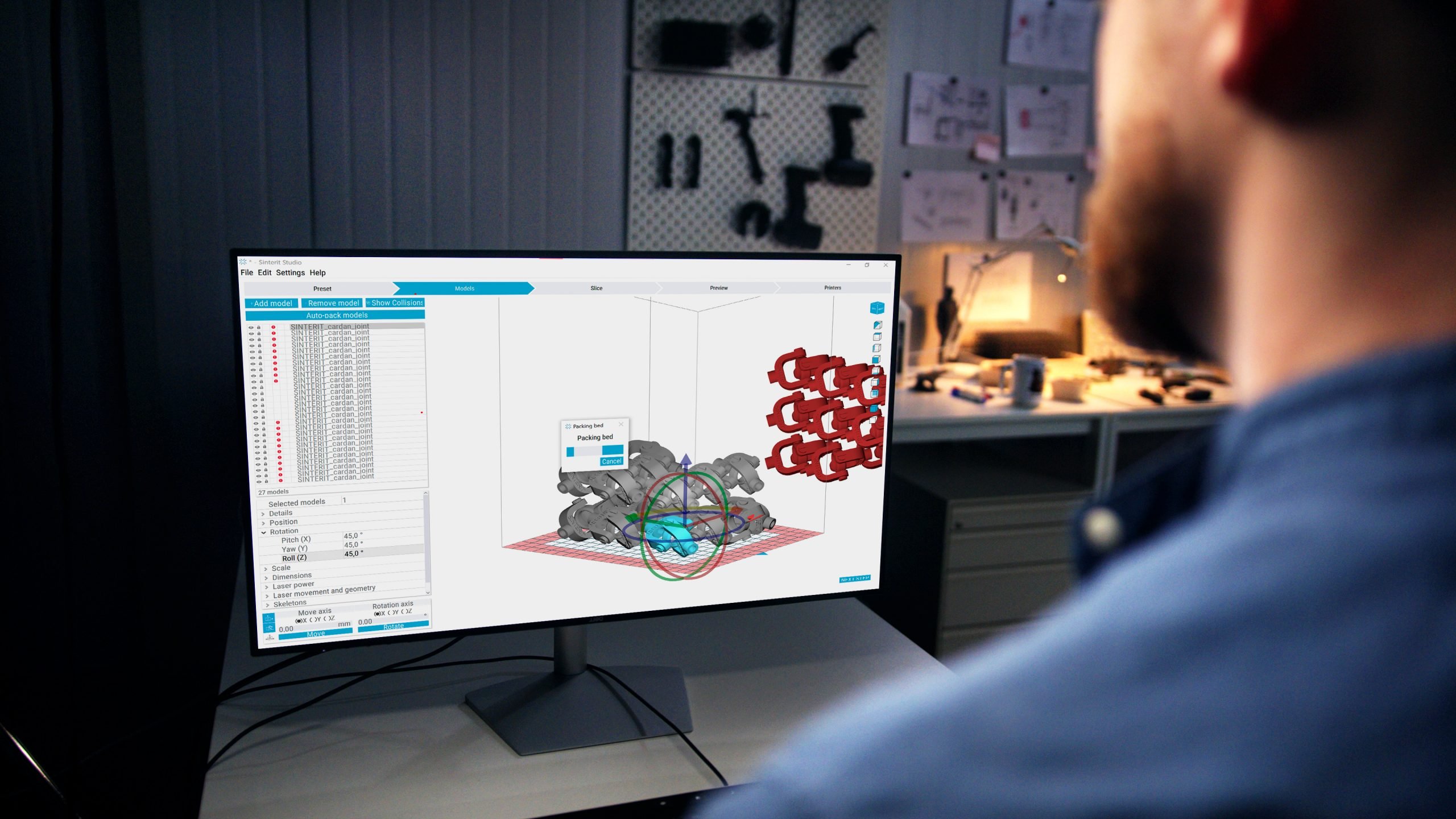Polish SLS specialist Sinterit has added new features to its Sinterit Studio 3D printing software, including an auto nesting feature for packing multiple models onto the print bed of its benchtop Sinterit Lisa and Lisa PRO 3D printers.
Nesting is the practice of methodically arranging several models into a single print job. It can be done manually by lining up distinct objects within the CAD/CAM environment, but tools like Sinterit’s new offering can automatically calculate optimal arrangements that result in maximum unit quantity within a single build. SLS is particularly amenable to nesting due to its freedom from obtrusive support structures.
Sinterit says its new auto nesting software feature will shorten build prep time and, more significantly, reduce printing times and material usage.
In addition to auto nesting, the new software release also provides new adjustable open parameters, allowing users to tinker with the temperature settings of the Lisa and Lisa PRO printers. Four heating zones comprising a total of 22 heating elements can be controlled by the user to suit different materials and experimental procedures.
Manufacturing on Demand
“The temperature distribution is crucial in the SLS printing process,” says Michal Grzymala-Moszczynski, Sinterit’s co-founder and CTO. “That is why it is paramount that we provide the ability to control each of the heaters in our printer, thanks to which you now have the full opportunity to develop new materials and quality printouts.”
Sinterit introduced the Lisa 3D printer in 2015 as the most affordable SLS system on the market, followed by the Lisa PRO, a larger and more robust system. Complementing its printing hardware is its SLS ecosystem comprising software, post-processing equipment, and last year’s Powder Handling Station.
Sinterit also offers a wide range of SLS materials for its printers. Earlier this month, the Krakow-headquartered company introduced a polypropylene (PP) powder for the two Lisa models, touting its usefulness for watertight parts like electronics housings.
* This article is reprinted from 3D Printing Media Network. If you are involved in infringement, please contact us to delete it.
Author: Benedict O’Neill



Leave A Comment